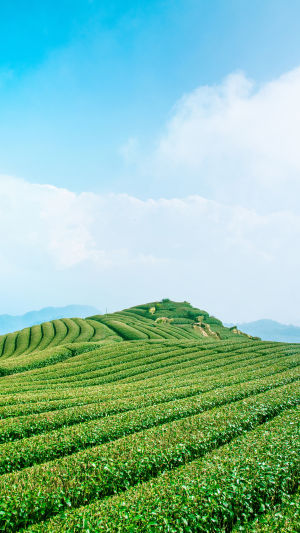Tea is a popular beverage made by steeping the dried leaves or buds of the Camellia sinensis plant in hot water. The drink is loved by millions of people around the world for its refreshing taste, comforting warmth, and numerous health benefits.
The appearance of the tea leaves themselves will also vary depending on the type of tea. For example, black tea is usually dark brown or black, while green tea is usually light green. Herbal teas that are not made from the tea tree plant can come in a variety of colors and textures, depending on the herbs, flowers, or fruits used to make them.
To prepare the tea, pour hot water over the tea leaves and allow the mixture to steep for a few minutes. The resulting liquid can then be poured into a glass or mug and enjoyed as is, or with the addition of milk, sugar, honey, or lemon according to personal preference.
Many world-famous tea gardens produce some of the finest teas in the world. Here are some examples:
1. Darjeeling tea garden in India: Darjeeling grows in the Himalayan region of West Bengal. The tea gardens here produce black, green, white, and oolong teas, revered for their delicate flavors and aromas.
2. Assam tea garden in India: Assam is the largest tea-producing area in India, and the strong black tea produced in its tea garden is popular all over the world.
3. Uva Tea Garden, Sri Lanka: The Uva region of Sri Lanka is famous for its high-quality black tea with unique flavor and aroma.
4. Kenya Kenya Tea Gardens: Kenya is one of the largest tea-producing countries in the world, and its tea gardens produce a variety of black, green, and white teas that are prized for their intense flavor and color.
5. Huangshan Tea Garden, China: Huangshan or Huangshan is a UNESCO World Heritage Site in China, known for its stunning natural beauty and production of premium green tea.
6. Japanese tea gardens: Japan is famous for its green tea, and tea gardens all over the country grow green tea. Some of the most famous Japanese teas include sencha and matcha.
These are just a few examples of the many world-famous tea estates that produce some of the finest tea in the world. Each tea-growing region has its unique flavor, aroma, and character, making tea a truly diverse and fascinating beverage.
Tea is a popular beverage consumed by millions of people around the world, and it has been shown to have a range of health benefits. Here are some potential benefits of drinking tea:
Antioxidant properties: Tea contains antioxidants called polyphenols, which can help protect the body from damage caused by free radicals.
Reduces risk of chronic disease: Research suggests that regular tea consumption may help reduce the risk of chronic diseases such as heart disease, stroke, and certain types of cancer.
Improves brain function: Caffeine and other compounds in tea have been shown to improve brain function, including memory, concentration, and reaction time.
Reduce stress and anxiety: Tea contains an amino acid called L-theanine, which promotes relaxation and reduces stress and anxiety.
Improves digestion: Certain types of tea, such as peppermint and ginger tea, have been shown to improve digestion and reduce symptoms of nausea and an upset stomach
Hydration: Tea is a hydration drink that helps the body stay hydrated throughout the day.
Boosts immune function: Tea contains compounds that help boost the immune system and protect against infection.
Overall, drinking tea can benefit a healthy lifestyle. However, it is important to note that the potential benefits of tea may vary depending on the type of tea consumed and personal health factors, and it should not be considered a substitute for a balanced diet and regular exercise.





